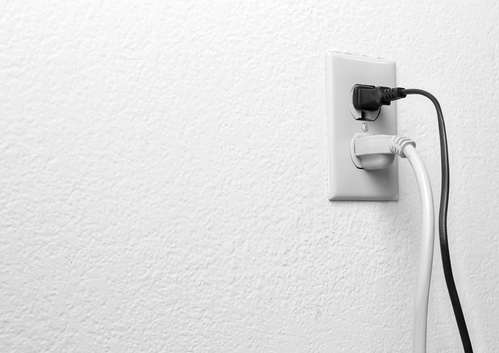Frustrated by a tripped GFCI breaker? Look on the bright side: it might be saving you from electrocution. Although it’s possible to have a defective or broken GFCI outlet that trips for no reason, it’s more likely that you have some other electrical repair to make. A dangerous ground fault or incorrect GFCI wiring can cause the outlet and other appliances in the room to turn off.

Before we proceed, let’s make one thing clear. Not all GFCI outlets are the same. Some things are standard, but outlet manufacturers can use different GFCI wiring diagrams and color codes. An outlet made twenty years ago will look and function very differently than a new one.
When troubleshooting a GFCI, don’t assume that the original electrician or homeowner wired it correctly. If you replace the outlet, you might need to wire it differently than the old one.
Line and Load Wiring Reversed
Whereas a non-GFCI outlet will just have one set of wires, GFCI wiring has two sets. The line and load terminals each have a hot wire and a neutral wire. Line power is what comes into the receptacle. The load is what flows further down the circuit to the next outlet or light switch.
If the GFCI wiring is reversed, one of a number of problems can arise depending on the make and model. You might notice the GFCI does not reset or test correctly. The outlet might work for power but not have ground fault protection. Or other outlets in the room don’t have power.
Assuming (which isn’t always a good idea) that your receptacle and wiring have the standard colors, here’s the proper GFCI wiring connections:
- LINE side: Connect the black wire to the brass screw
- LOAD side: Connect the white wire to the silver screw
- GROUND screw: Not necessary, but the bare copper wire would go to the green screw
GFCI Does Not Reset
After a GFCI trips or when you test the device (you do test GFCI outlets monthly, right?) you should be able to press reset and use your appliances again—if and only if there isn’t actually a ground fault.
Likely causes of a GFCI that won’t turn back on:
- Ground fault: Moisture has breached the GFCI wiring or receptacle. If possible, look for frayed wiring or damaged wire jackets and dry or dehumidify the area.
- Reversed line and load: If the reset button will not stay pushed in but the outlet still has power, this is a likely reason. But unscrew the faceplate and check the wiring to be sure.
- Broken GFCI: If the test and reset buttons do nothing, you may well need a new GFCI.
- Other GFCI wiring problems: Are there multiple GFCI outlets on the circuit, or is there a GFCI breaker on the panel? This can make troubleshooting tricky because there could be bad wiring elsewhere on the circuit or a different GFCI has tripped.
Finding a Ground Fault
Even if everything looks fine with the GFCI wiring, you should not keep resetting and using the outlet if it trips repeatedly. When a circuit breaker trips, you can unplug something to lessen the load and reset the breaker. However, a ground fault that trips the outlet cannot be solved this way.
GFCI wiring doesn’t have to be soaking wet to create a fault. Look for condensation inside the wall, cut marks on the wiring insulation, and any other signs of moisture present. Only attempt to use that blow dryer or coffee maker again once you know there’s no fault or wiring hazard.
Replacing a GFCI outlet requires safety equipment and electrical knowledge. Contact your local Santa Rosa electrician for help with GFCI wiring if you need to do more than test and reset the outlet.

